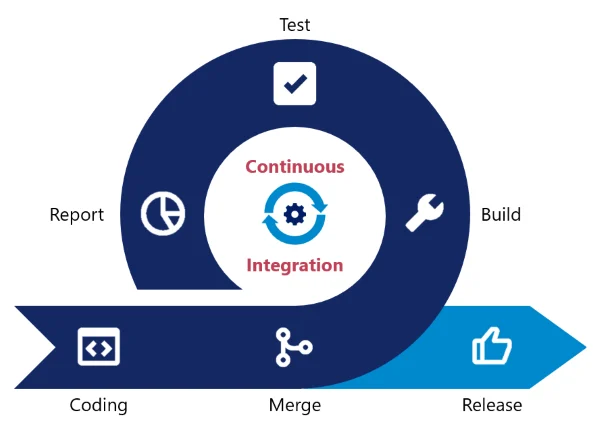Introduction:
Continuous digital transformation is driving businesses to change and innovate quickly. The need for rapid response is slowly leading to changes in the process of developing and testing software programs. The importance of this change is the additional importance of collaboration between developers and testers in this rapid development. This blog post aims to highlight the importance of communication and collaboration between two important stakeholders in the software development lifecycle.
Different and modern integration methods
Historically, software developers and testers worked in separate silos, working independently without interaction, or collaboration with a lot of interaction. However, this model often makes software development inefficient because problems discovered by testers during final testing require revisions, thus causing work to be delayed.
Now the rules of the game have changed. Continuous integration, continuous delivery, and DevOps are buzzwords that resonate throughout the software development process and highlight the importance of interaction and collaboration between manufacturers and testers. The importance of collaboration
Effective problem solving: When developers and testers work well together, they can troubleshoot and resolve problems faster. When people detect defects, both parties can quickly cooperate to solve the problem without major delays.
Encourage early testing: Early and regular testing allows testers to find bugs at an early stage rather than waiting for the development phase to be completed, thus reducing bug fixing costs and time.
Better understanding and faster delivery: By creating open communication, developers and testers can better understand each other’s work and problems so they can take action. Better work and faster delivery time.
Improve product quality: When auditors are involved from the early stages of development, they can provide valuable information about risks and user opinions, thus helping to improve all the good aspects of the product.
Creating a collaborative environment
Businesses cannot rely on fostering collaboration between developers and testers; they should support it. The process is as follows:
Regular meetings and open discussions: Clarify and encourage open communication among your team through regular meetings, forums and one-on-one conversations. This will ensure that everyone knows and understands the project clearly.
Use collaboration tools: In this digital age, there are many software tools that facilitate effective collaboration between developers and testers. Tools like Slack, Jira, and Trello can be used to simplify project management, tasks, and information sharing.
Collaborative teams: Encourage the creation of collaborative teams where developers and testers can support each other, learn from each other, and collaborate to develop the brand plan.
Develop a blame-free culture: Making mistakes is part of the healing process. Make sure the team understands this and foster a criticism-free culture where people feel safe to admit their mistakes and learn from them.
Conclusion:
As the world moves towards increasingly faster software development, the importance of communication and collaboration between developers and testers will never end. So much can be said. By creating a culture of collaboration and transparency, companies can use the knowledge and skills of both groups to produce strong, innovative and effective solutions that provide a competitive advantage in the market. After all, unity is power and only through unity can good things be achieved.

